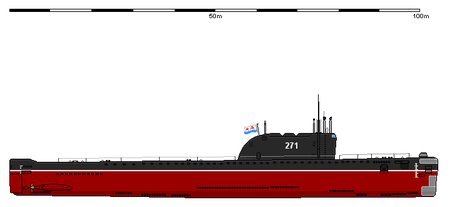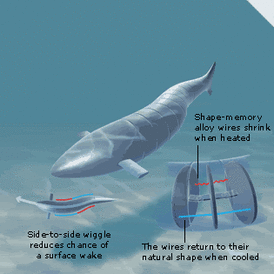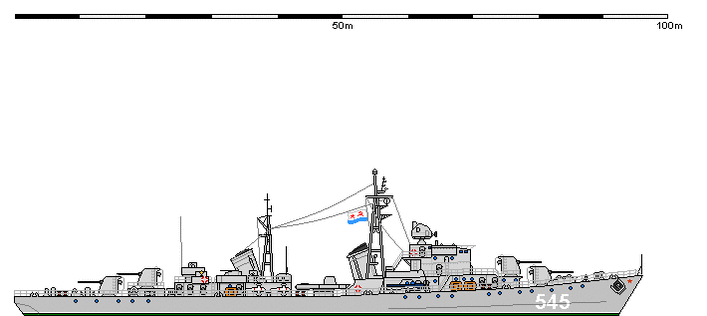Royal Navy
Littoral Combat Ship

The LCS is a fast, highly maneuverable, networked surface combat ship. The design combines high-speed maneuverability with a comfortable seakeeping motion that supports launch and recovery operations, combat missions and optimal human performance from the crew. The ship can turn 360 degrees in less than eight lengths at its rated sprint speed and it can accelerate to full speed in less than two minutes. The ship uses a modular design to facilitate rapid mission configuration. The mission modules will be able to be changed, tested and working within 24 hours.The mission packages will be: mine warfare (MIW), anti-submarine warfare (ASW) and anti-surface warfare (SUW). The mission modules may be integrated into standard-sized containers that can be installed in the ship and other systems will be transferred onto the ship on pallets. The mission systems will be connected to the ship's network and communicate with the other ship systems and other surface ships and aircraft.
The main armament on all modules is the 88mm naval gun system firing 220 rounds a minute to a range of 18km. This gun is guided by radar and FLIR. The MIW module includes: the AN/WLD-1 remote minehunting system, AN/AQS-20A sonar mine detecting set, organic airborne surface influence sweep, airborne laser mine detection system and airborne mine neutralization system.
The main armament on all modules is the 88mm naval gun system firing 220 rounds a minute to a range of 18km. This gun is guided by radar and FLIR. The MIW module includes: the AN/WLD-1 remote minehunting system, AN/AQS-20A sonar mine detecting set, organic airborne surface influence sweep, airborne laser mine detection system and airborne mine neutralization system.
Iowa Class battleship

The Iowa Class destroyer is a heavy, slow and well armed battleship. Armed with three main guns and several AA batteries in the hull, the Iowa is considered one of the best warships in the royal navy. Its role withing the RN is the heavy bombardment of coastal areas and to escort smaller frigates and corvettes.
Drake Class Assault Carrier

The Drake Class Amphibious Assault Ships are designed to land forces on hostile shores anywhere in the world. The Drake-class has an air group of helicopters that are used to ferry troops and equipment to the shore from the ships. These helicopters are supplemented by a squadron of up to eight Chimera ATF. Up to 20 Chimera can be embarked when the ship is used as a temporary VTOL or "Chimera Carrier". They also possess a well-deck for launching up to six Landing Craft Air Cushion (LCAC) hovercraft . Each Drake-class warship has medical facilities capable of providing intensive medical assistance to 600 casualties, whether combat incurred or brought aboard ship during humanitarian missions.
Archer Missile Submarine

The Archer Class Guided Missile Destroyer features the following: a low radar profile; an integrated power system, total ship computing environment infrastructure, serving as the ship's primary LAN and as the hardware-independent platform for all of the ship's software ensembles; automated fire-fighting systems and automated piping rupture isolation. The destroyer is designed to require a smaller crew and be less expensive to operate than comparable warships. It will has a wave-piercing tumblehome hull form whose sides slope inward above the waterline. This will reduce the radar cross-section, returning much less energy than a more hard-angled hull form.
Fletcher class Destroyer

Displacement: 2,050 tons (standard)
2,500 tons (full load)
Length: 376.5 ft (114.8 m)
Beam: 39.5 ft (12.0 m)
Draft: 12.5 ft (3.8 m)
Propulsion: 4 Babcock & Wilcox oil fired boilers; 2 General Electric geared steam turbines; 2 screws; =60,000shp
Speed: 36.5 knots (67.6 km/h)
Range: 5,500 miles at 15 knots
Complement: 329 officers and men
Armament:
• 5 × single 5 inch/38 caliber guns guided by a Mark 37 Gun Fire Control System with Mk25 fire control radar linked by a Mark 1A Fire Control Computer stabilized by a Mk6 8,500 rpm gyro.
• 6–10 × 40 mm Bofors AA guns (early ships carried 4 × 1.1 inch/75 caliber guns),
• 7–10 × 20 mm Oerlikon cannons,
• 10 × 21 inch torpedo tubes (2×5),
• 6 × K-guns,
• 2 × depth charge racks
2,500 tons (full load)
Length: 376.5 ft (114.8 m)
Beam: 39.5 ft (12.0 m)
Draft: 12.5 ft (3.8 m)
Propulsion: 4 Babcock & Wilcox oil fired boilers; 2 General Electric geared steam turbines; 2 screws; =60,000shp
Speed: 36.5 knots (67.6 km/h)
Range: 5,500 miles at 15 knots
Complement: 329 officers and men
Armament:
• 5 × single 5 inch/38 caliber guns guided by a Mark 37 Gun Fire Control System with Mk25 fire control radar linked by a Mark 1A Fire Control Computer stabilized by a Mk6 8,500 rpm gyro.
• 6–10 × 40 mm Bofors AA guns (early ships carried 4 × 1.1 inch/75 caliber guns),
• 7–10 × 20 mm Oerlikon cannons,
• 10 × 21 inch torpedo tubes (2×5),
• 6 × K-guns,
• 2 × depth charge racks
Houston class Submarine

The main submarine used in the Navy. Has six torpedo launching bays and can launch emp missiles to the surface and atmosphere. Is extremely fast and well armored.
AOE Fast Combat support ship

The fast combat support ship (AOE) is the Navy's largest combat logistics ship, designed as an oiler, ammunition and supply ship. All fast combat support ships currently in service with the Navy are operated by The Imperial Marines. The AOE has the speed and armament to keep up with carrier battle groups. It rapidly replenishes Navy task forces and can carry more than 200,000 barrels of oil (28,000 m³), 3,150 tons of ammunition, 500 tons of dry stores and 250 tons of refrigerated stores. It receives petroleum products, ammunition and stores from shuttle ships and redistributes these items simultaneously to carrier battle group ships. This reduces the vulnerability of serviced ships by reducing alongside time.
K45 battleship

Heavy battleship, equipped with four ion cannons. The ion cannons can be replaced by proton cannons and plasma cannons. Has a landing zone for helicopters and VTOL vehicles. Has 16 missile launchers, and one underwater torpedo launcher.
Archer class Carrier

The Archer Class Nuclear Powered Carrier, the centerpiece of our next generation carrier Fleet, is a large-deck, nuclear-powered ship. Featuring newly designed and integrated combat systems that eliminates rotating antennas. Archer Nuclear Carrier incorporates new integrated combat systems, and advanced nuclear propulsion plant and a new electrical power and distribution system. Carriers will feature additional new technologies including an Electromagnetic Aircraft Launching System (EMALS), an Electromagnetic Aircraft Recovery System (EARS), improved crew habitability, survivability improvements, performance improvements, and new functional arrangements and distributed systems.
King George V class warship

Displacement: Standard; 42,237
Length: 745 ft (227 m)
Beam: 103 ft (31 m)
Draught: 32.6 ft (9.9 m)
Propulsion: 8 Admiralty three-drum small-tube boilers with superheaters
4 Parsons single-reduction geared turbines
4 three-bladed propellers, 14 ft 6 in diameter (4.42 m)
Speed: 28.0 knots at 111,700 shp (1941 trials)
Range: 5,400+ nm at 18 knots (11.9 tons/hour fuel burn)
Armament:
• 10 × BL 14-inch (360 mm) Mk VII guns
•16 × QF 5.25-inch (133 mm) Mk I guns
•32 × QF 2 pounder 40 mm "pom-pom" guns (4×8) (as built; light AA was substantially reinforced during the war)
Armour:
• Belt: 14.7 inches (373 mm)
• Lower belt: 5.4 inches (137 mm)
• Deck: up to 5.88 in (149 mm)
•Turrets: 12.75 inches (324 mm)
•Aircraft carried: 4 Supermarine Walrus seaplanes
Length: 745 ft (227 m)
Beam: 103 ft (31 m)
Draught: 32.6 ft (9.9 m)
Propulsion: 8 Admiralty three-drum small-tube boilers with superheaters
4 Parsons single-reduction geared turbines
4 three-bladed propellers, 14 ft 6 in diameter (4.42 m)
Speed: 28.0 knots at 111,700 shp (1941 trials)
Range: 5,400+ nm at 18 knots (11.9 tons/hour fuel burn)
Armament:
• 10 × BL 14-inch (360 mm) Mk VII guns
•16 × QF 5.25-inch (133 mm) Mk I guns
•32 × QF 2 pounder 40 mm "pom-pom" guns (4×8) (as built; light AA was substantially reinforced during the war)
Armour:
• Belt: 14.7 inches (373 mm)
• Lower belt: 5.4 inches (137 mm)
• Deck: up to 5.88 in (149 mm)
•Turrets: 12.75 inches (324 mm)
•Aircraft carried: 4 Supermarine Walrus seaplanes
Squid UUV

It is designed to conduct Mine Warfare (MIW); Intelligence, Surveillance, and Reconnaissance (ISR); and undersea environmental sensing and mapping. It can achieve extremely deep depths of 10,000 feet (3048 m) and is nearly undetectable as a result of its design and battery powered propulsion. It is 12.5 feet (3.81 m) in lenght and 660mm in diameter. The Squid UUV has an advanced AI system for autonomous operation or optionally can be tethered and controlled by fiber optic cable. Equipped with a variety of passive systems and no light video cameras. Electro-Magnetic (EM) sensors passively scan the radio frequency spectrum for intentional electronic transmissions from hostile forces. MAD sensors are used to detect the natural and manmade differences in the Earth's magnetic fields caused by large ferrous objects. Passive sonar is also used. The Squad can electronically tag enemy vessels and mines and be used to relay targeting information to aircraft, subs and ships.






